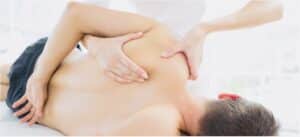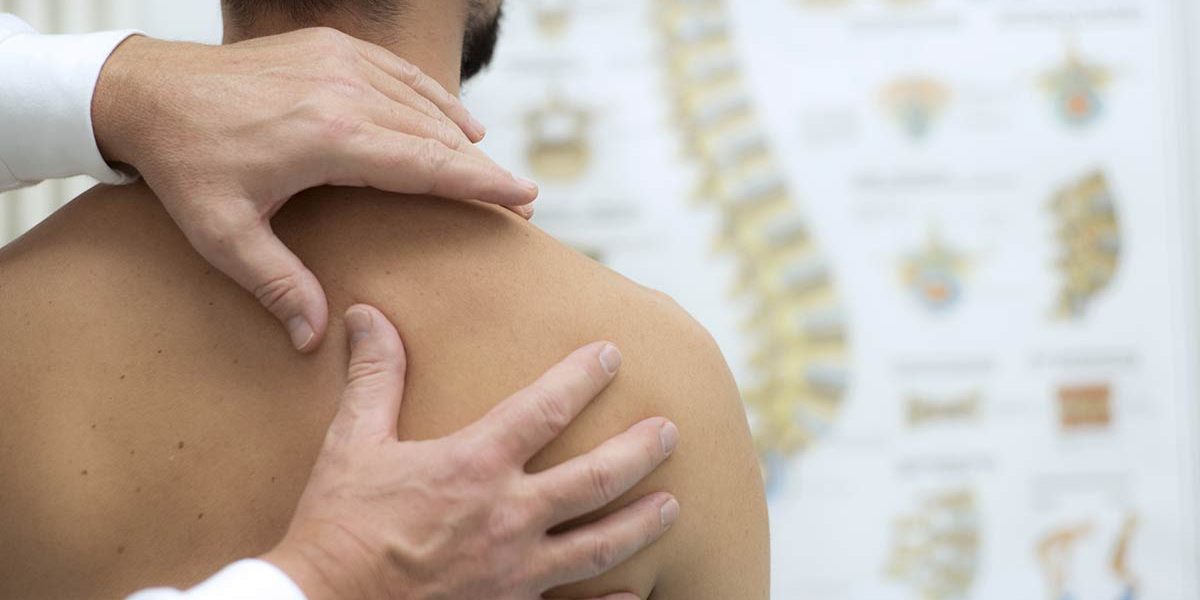By Emma MacDonald, posted 24th May 2021
The rotator cuff comprises the Infraspinatus, Supraspinatus, Subscapularis, and Teres Minor muscles, which play a crucial role in stabilizing the upper arm in the shoulder blade. Rotator cuff massage enables rotation, lifting, and outward arm movement, contributing to the flexibility and strength of the shoulder.
Exploring therapeutic interventions, such as massage targeting the Infraspinatus, Supraspinatus, Subscapularis, and Teres Minor, becomes essential in providing targeted care for these crucial muscles. Individuals often turn to therapeutic practices like rotator cuff massage or specific exercises for the Infraspinatus, Supraspinatus, Subscapularis, and Teres Minor muscles to enhance shoulder health and function.

What Does The Rotator Cuff Do?
The rotator cuff has an important job of stabilizing the shoulder. Simply put, these shoulder muscles enable you to carry out daily tasks, like dressing or carrying shopping bags.
Moreover, the rotator cuff and tendons are susceptible to injuries, particularly in individuals involved in repetitive sports like tennis or cricket.
Additionally, excessive use, especially during extended overhead movements, may result in tendon inflammation (tendinopathy) and shoulder pain. In such cases, seeking timely intervention, such as massage therapy, can be beneficial for effective recovery and long-term shoulder health.
Incorporating Additional Care
You may also want to consider using physiotherapy or chiropractic care for your rotator cuff tear. In conjunction with massage therapy, working with a chiropractor or physiotherapist for your rotator cuff tear can yield positive results. This comprehensive approach addresses multiple aspects of healing, ensuring a more well-rounded and effective recovery.
Rotator Cuff Massage

Massage therapy reduces inflammation, improves range of motion, and alleviates pain caused by a rotator cuff tear. Techniques like deep tissue massage, trigger point release, and myofascial release break up scar tissue and encourage healing. Improved circulation provides more oxygen and nutrients to the muscles and tendons, reducing muscle tension and aiding the healing process.
This video demonstrates- Massage Techniques for the upper trapezius muscle. Cross-Fibre soft tissue release and trigger point techniques. These massage techniques ease neck and shoulder tension. It also alleviate neck and shoulder pain by improving neck and shoulder range of motion.
Regular massage sessions ensure proper shoulder alignment, preventing further damage during recovery. Moreover, massages keep the shoulder flexible and strong, facilitating a seamless return to activities post-healing.
Is Massage Good for Rotator Cuff Tear?
Consider combining massage therapy with physiotherapy or chiropractic care for optimal results.
Additionally, as a pivotal element of the treatment plan, massage therapy plays a crucial role in reducing inflammation and muscle tension, enhancing circulation.
Consequently, this not only provides relief during recovery but also ensures proper alignment post-healing. If you’re dealing with a rotator cuff tear or another shoulder injury, it’s worthwhile to explore massage as a vital component of your comprehensive treatment plan.
Book now to experience the benefits of professional massage therapy at Back To Health Wellness in Guildford, Surrey.

